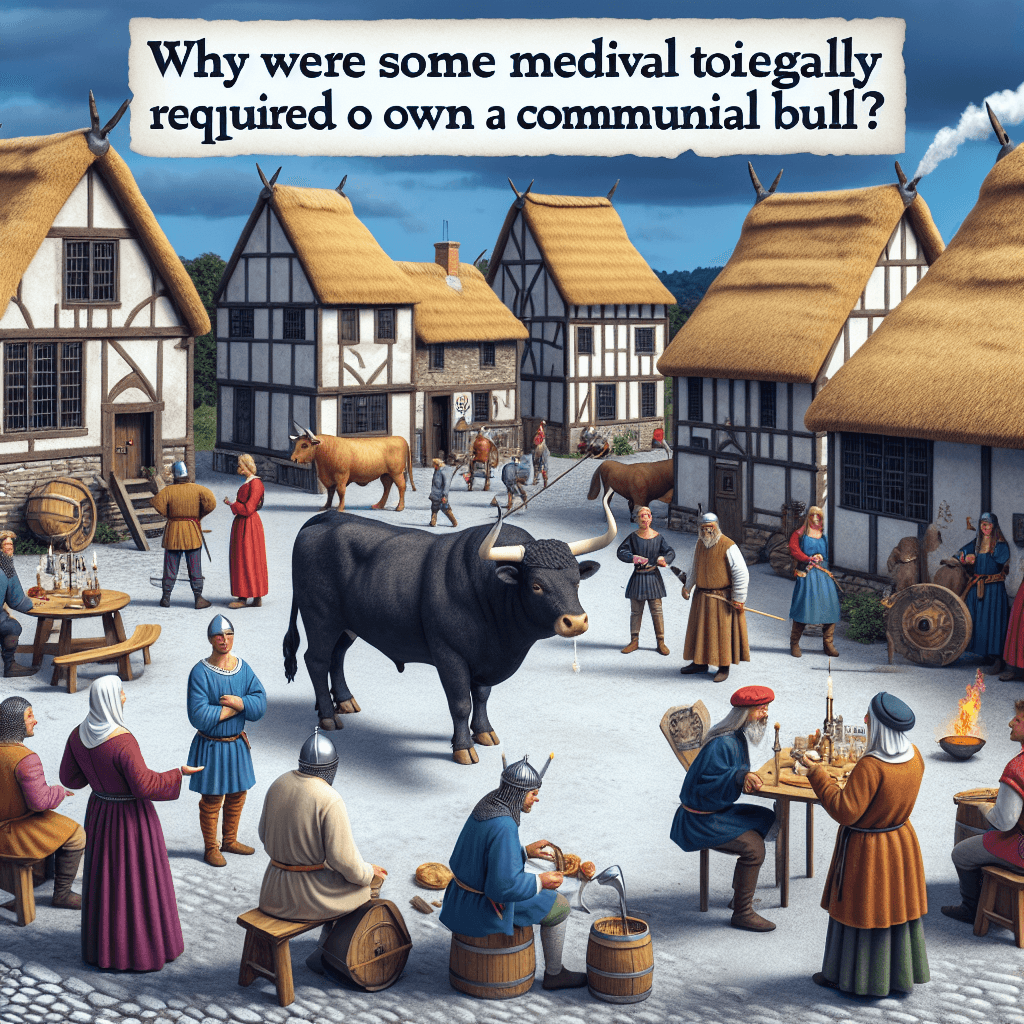Why were some medieval towns legally required to own a communal bull
Discover the peculiar medieval law that mandated towns keep a communal bull—a rule born not from strange custom, but from the brutal economic realities of survival.


Too Long; Didn't Read
Medieval towns were legally required to keep a communal bull to ensure everyone, especially poorer farmers, could breed their cattle. This was vital for maintaining the town's food supply, economy, and overall herd quality.
The Town Bull: Why Were Some Medieval Towns Legally Required to Own a Communal Bull?
When you picture medieval life, what comes to mind? Perhaps it's towering castles, armored knights, or bustling marketplaces. But what about the humble, yet legally mandated, town bull? It might sound like a peculiar historical footnote, but for many medieval communities, the presence of a communal bull was not just a convenience—it was the law. This requirement was woven into the very fabric of rural life, reflecting a sophisticated understanding of economics, agriculture, and communal responsibility. This post will delve into the practical reasons why some medieval towns were legally required to own and maintain a bull for the benefit of all their residents.
The Backbone of the Medieval World: Agriculture and Livestock
To understand the law of the town bull, we must first appreciate the central role of agriculture in the medieval economy. For the vast majority of the population, life revolved around the seasons of planting and harvesting. In this world, cattle were a vital asset. They provided not just meat and milk, but also leather for clothing and equipment. Crucially, male cattle, castrated to become oxen, were the primary source of traction power, pulling the heavy ploughs that tilled the fields. The health, strength, and number of a village's cattle were directly linked to its ability to produce food and survive. A community with weak or insufficient livestock was a community on the brink of disaster.
The Economics of Breeding: A Shared Necessity
Keeping a bull was an expensive and often impractical proposition for an individual medieval peasant. The typical villager or freeman might own only one or two cows, making the investment in a dedicated breeding animal uneconomical. Here's why a communal approach made perfect sense:
- High Upkeep Costs: A bull consumes a significant amount of food and requires secure housing but does not produce milk or perform the daily labor of an ox. For a single family, its upkeep represented a major drain on resources for a very specialized, infrequent service.
- Inefficient Use: A single bull can service dozens of cows. It was highly inefficient for every small farmer to keep their own bull for just one or two cows.
- Space and Safety: Bulls can be aggressive and difficult to manage, requiring sturdy enclosures and experienced handlers—luxuries most peasants could not afford.
By pooling resources, the community could share the cost and burden. The town, manor, or local parish would own the bull, and its upkeep would be funded through taxes, tithes, or small fees (sometimes called "bull-pennies") paid by those who used its services. It was a pragmatic solution to ensure the entire community’s herd could reproduce.
Quality Control and Agricultural Improvement
The requirement for a communal bull was also a clever form of agricultural regulation and quality control. The lord of the manor or the town council had a vested interest in the productivity of the community. Stronger oxen meant more land could be ploughed, leading to better harvests and, consequently, higher rents and taxes.
By providing a high-quality bull—one selected for its size, strength, and health—the authorities could systematically improve the genetic stock of the entire local herd. This practice ensured that the next generation of calves would grow into strong draught animals and productive dairy cows. Forbidding villagers from using their own, potentially inferior, bulls prevented the spread of undesirable traits and protected the long-term agricultural stability of the region. This legal mandate was, in essence, an early and effective form of selective breeding managed at a community level.
The Law of the Land: The 'Parish Bull'
This obligation was often formalized in a town's charter or as part of established manorial custom. The responsibility for maintaining the "bull of the town" or "parish bull" typically fell to the lord of the manor. In some cases, the duty fell to the local church. The parish priest, or parson, received a portion of the community's agricultural output as a tithe, which often included livestock. In return for this, the parson was sometimes expected to provide essential services, which included maintaining a bull and a boar for the use of the parishioners. This arrangement underscored the bull's role as a fundamental piece of community infrastructure, as vital as the mill or the church itself.
Conclusion
The medieval law requiring a communal bull was far from a strange or arbitrary rule. It was a highly logical system born from economic necessity and a practical understanding of animal husbandry. It allowed for the cost-effective propagation of vital livestock, acted as a tool for improving the genetic quality of herds, and reinforced the interdependent nature of medieval communities. This seemingly obscure bylaw offers a fascinating glimpse into how our ancestors organized their society, prioritizing communal stability and shared prosperity to ensure their collective survival in a challenging world.


